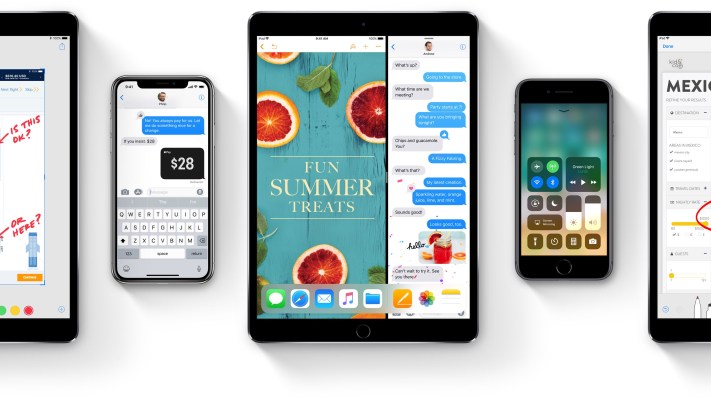Apple has just released the final version of iOS 11. This update is packed with new features for the iPad and new core frameworks for the iPhone. The update is currently rolling out and is available both over-the-air in the Settings app, and by plugging your device into iTunes for a wired update.
Many people try to download these major updates at the same time. Apple usually implements a queue system to ensure speedy downloads once you’re at the front of the queue.
iOS 11 is compatible with the iPhone 5s and later, the iPad mini 2 and later, the iPad Air and later as well as the most recent iPod touch.
But first, backup your device. Make sure your iCloud backup is up to date by opening the Settings app on your iPhone or iPad and tapping on your account information at the top and then on your device name. Additionally, you can also plug your iOS device to your computer to do a manual backup in iTunes (or do both, really).
Don’t forget to encrypt your backup in iTunes. It is much safer if somebody hacks your computer. And encrypted backups include saved passwords and health data. This way, you don’t have to reconnect to all your online accounts.
Once this is done, you should go to the Settings app as soon as possible to get in the queue. Navigate to ‘Settings,’ then ‘General’ and then ‘Software Update.’ Then you should see ‘Update Requested…” It will then automatically start downloading once the download is available.
iOS 11 is the coming of age of the iPad. It turns your iPad into a more capable computing device with a brand new user interface. While the home screen hasn’t changed, there’s now a system-wide dock with all your favorite apps. You can drag your finger from the bottom edge of the screen to bring it up at any time.
If you keep dragging, you get an Exposé-like bird’s-eye view of your recent apps and workspaces — a workspace can be multiple apps running in split screen. If you want to open two apps side-by-side, you can now just drag and drop an app icon from the dock to the main screen. It’s a lot smoother than the previous Split View interface.
Apple also implemented a new spring-loaded, drag-and-drop gesture. Now, you can drag documents, photos, audio files, links and more across multiple apps. It feels like a desktop computer. You can also manage your files in the new Files app, which supports cloud file services, such as Dropbox, Google Drive, Box and OneDrive.
On the iPhone, most of the changes are under the hood. Many developers have been playing around with ARKit, Apple’s new augmented reality framework. It is now much easier to create AR-enabled apps, with iOS doing the heavy lifting. You can expect a lot of augmented reality apps and features in the App Store.
The most visible change is the new Control Center with customizable shortcuts (at least some of them). You can add an Apple TV remote shortcut or a battery-saving mode shortcut for instance. The App Store has been completely redesigned as well. And, of course, by keeping your iPhone up-to-date, you get the latest security updates and performance improvements. New emojis are also coming soon — and we both know you don’t want to stay behind on the emoji front.
While you download the update, why don’t you head over to my review and read about all the new features in iOS 11. Oh, and don’t forget to read our tips and tricks to impress all your friends.
